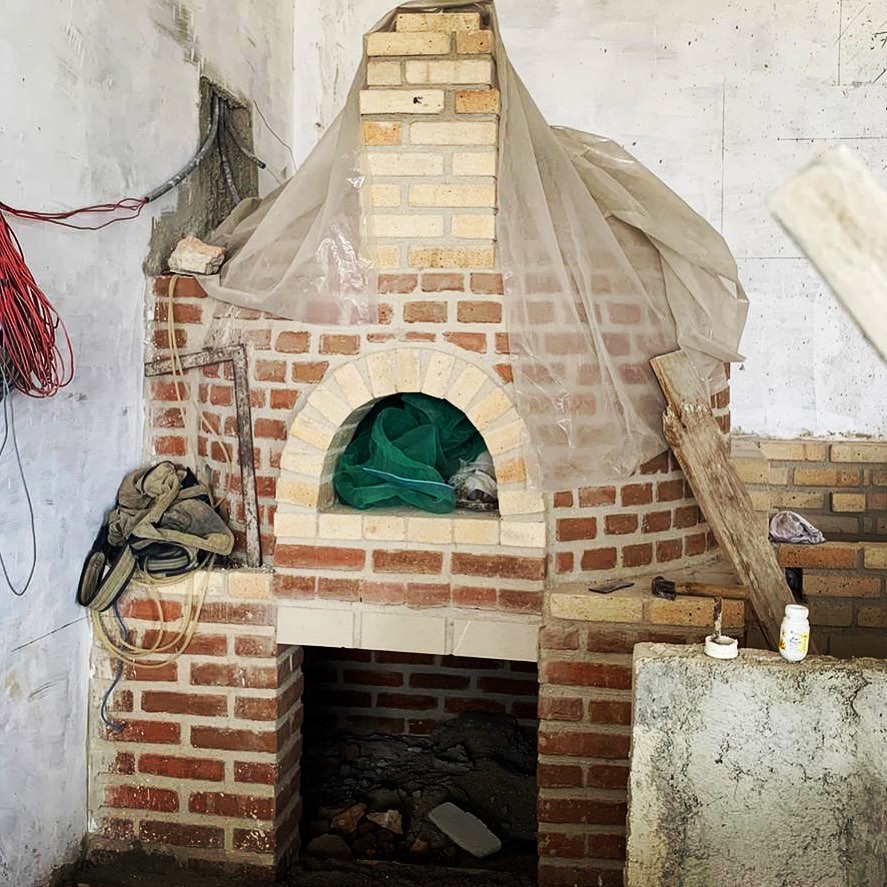To master the skill of cooking in a brick pizza oven you must first understand how the oven works. Brick ovens, by nature, cook with radiant heat, convection, and conduction.
Radiant Heat Is Heat From a Direct Source
In a wood fired oven, radiant heat can come from two sources; directly from the fire, and from stored heat in the brick oven walls and hearth.
When the brick oven is heated properly radiant heat is stored in the dome of the oven as well as the oven floor. This radiant heat is a very even heat and will cook the food from all directions.
The special shape of your oven ensures that the stored radiant heat is used efficiently, reducing all “cold spots” in your brick oven. By slowly building the stored heat in your oven you will be able to take advantage of the radiant heat for longer periods of time. You will also utilize radiant heat by leaving a fire in the oven or hot coals. If you want high heat, and a short cooking time (pizzas), you will utilize this method.
Convection in an Oven Is Defined as Heated Air Circulating in an Oven
Cool air is drawn into the oven through the access hole (when exterior door is closed) or through the brick oven opening (when door is open). As the cool air is drawn into the brick oven it is rapidly heated by the fire and the stored heat in the oven. This heated air passes over the food evenly. As the air continues to heat, it passes to the back of the brick oven and rises. The heated air now passes over the food again on the way out of the oven’s flue. This “draw” causes a steady flow of heat to pass over the food in the oven, causing convection. As you develop your Brick Oven skills, you will learn how to control the amount of air coming into the brick oven; and the amount of air leaving the brick oven by controlling the flue.
You can also take advantage of convection in closed door cooking. When the brick oven is heated properly, and the fire is removed, you can place the insulating door on the oven to keep the heat in. When you add cool dough to the hot brick oven convection will take place through the moisture in the dough. As the hot air comes in contact with the dough the heat is transferred. The air will come off the dough cooler; then will be heated again by the oven. This process will create convection by the air constantly moving within the brick oven. To take full advantage of this process you would want to load your hot oven full with dough.
The Last Method of Cooking in Your Oven Comes From Conduction
Conduction simply occurs when a cooler object comes in contact with a warmer object and heat is transferred. The amount of conduction that takes place in your brick pizza oven will depend on two things; the temperature difference of the two items, and the material that is between them (if any).
For example, you may want to sear a steak by placing a cast iron grill in a very hot oven. Once the grill is at temperature, you will place room temperature steaks on the grill. This contact will cause conduction to take place and sear the steaks.
Another great example of conduction is putting a pizza in your hot brick pizza oven directly on the heated hearth. The heat transfer from the hearth to your pizza will cause an excellent crust to form. This is very important to be able to obtain a nice crust, instead of a soggy one.

